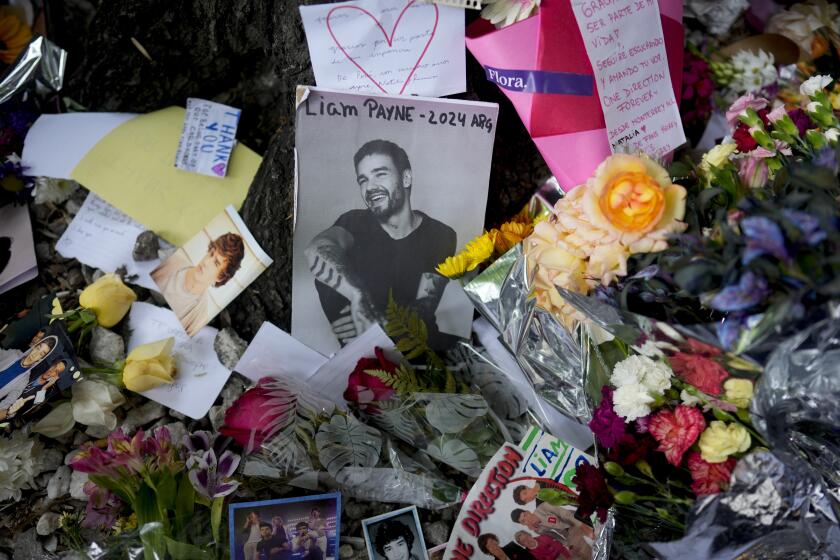Pitchfork’s ‘People’s List’: Music site’s (male) readers weigh in
- Share via
As SoundScan was announcing that Taylor Swift had once again topped the charts with a new single Wednesday morning, the tastemaking indie-rock website Pitchfork was publishing its first-ever “People’s List” of its readers’ favorite albums of the last 15 years. Swift’s multi-platinum music, of course, was nowhere to be found.
Instead, confirming how fragmented the popular music landscape has become and how narrow-casting has changed music consumption, one of the Western world’s most influential music sites made its premiere with a roster of male art rock bands, a little touch of hip-hop and a few female and/or nonwhite outliers.
Perhaps unintentionally, the list offers a revealing glimpse into the ways in which Pitchfork’s readership has digested the tastes and sentiments of its editors in Chicago. What’s the phrase? Hoisted by its own petard?
Spoiler alerts are coming at the end of this sentence, so hit the site first if you don’t want to ruin the (utter lack of) surprise. Radiohead has the top two slots, followed by Arcade Fire and Neutral Milk Hotel, a male-dominated rock trend that continues until the first hip-hop album appears in Kanye West’s “My Beautiful Dark Twisted Fantasy” at No. 9.
As for women? The only appearance of a female led (or co-led) act in the top 10 is Regine Chassagne of the band Arcade Fire, and in the top 50 only the XX, Beach House and White Stripes feature female members. That’s fewer than 10 women among the hundreds of musicians represented. Hmph.
In fact, you have to jump all the way down to No. 51 to find the first solo album by a woman -- Björk‘s “Homogenic.”
That shouldn’t come as a surprise. Of the nearly 28,000 voters, only 12% were women, which means that a scant 3,000 women participated in the survey.
Aware of this, Pitchfork’s editors made a point to include a disclaimer: “Data only represents contributors to the People’s List. And is not indicative of Pitchfork’s overall demographics.” Translated: “Advertisers, we promise that more women read the site than this poll would have you believe.”
All of this said, the execution of the People’s List is not only awe-inspiring but also signals an impressive new approach to tallying the tastes of a large online audience. Expect this kind of approach to appear more and more for the ubiquitous annual “Best of the Year” lists -- an exciting prospect.
As Pitchfork’s editors explain in an introduction, the list is “a comprehensive look at how our readers’ varying backgrounds, environments, and personal preferences influence the music they love.” The site’s editors crunched this data in fascinating ways, parsing by a voter’s “age, gender, genre, and year to show how these variables affect the outcome.” They also examined the results geographically, including data on 25 countries and 25 U.S. cities.
What is not included is any data on ethnicity or income, two variables that would be fascinating to parse. But maybe next year.
How did Los Angeles fare? Well, Angeleno voters apparently aren’t fans of their own city’s music; none of the top 10 is a hometowner, and only Beck’s “Odelay” made L.A.’s top 20. It ranked the highest among the city’s artists overall, at No. 30.
ALSO:
K-pop enters American pop consciousness
Review: Ariel Pink’s Haunted Graffiti, ‘Mature Themes’
Sunset Strip Music Festival: Manson slurs, Dead Sara kills
Twitter: @liledit
More to Read
The biggest entertainment stories
Get our big stories about Hollywood, film, television, music, arts, culture and more right in your inbox as soon as they publish.
You may occasionally receive promotional content from the Los Angeles Times.










